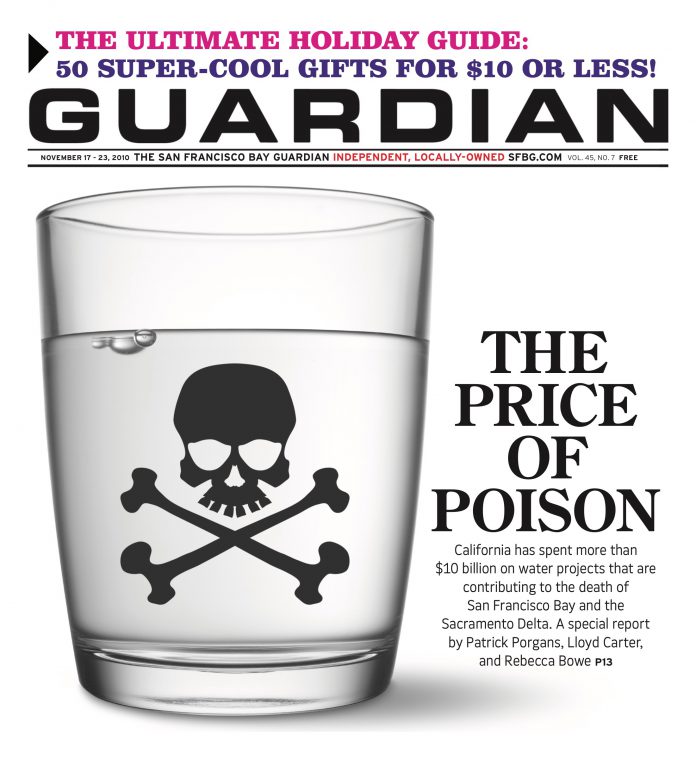By Patrick Porgans
In 2009, the last year of the so-called great California drought, a strange thing happened: Sacramento Valley growers produced a near record amount of rice, and down south, the Metropolitan Water District of Southern California (Met), the largest urban water supplier in the nation, experienced record-breaking water sales. All this despite repeated mainstream media accounts in 2009 of an economy-wrecking dust bowl water shortage.
According to the U.S. Department of Agriculture, the California rice harvest in 2009 was up 9 percent from the previous year and approached the record crop of 2004.
Rice consumes a great deal of water for its dollar value and produces little net income. According to a report by the University of California, Davis, the minimum amount of water required to grow a crop of rice is about 42 inches per acre. Unavoidable losses can add to this amount — so that the amount of water consumed (or evaporated) can be as much as 100 inches per acre, depending on the soil. That appears to be enough water to drown the tallest person on earth.
The California Rice Commission, a trade group representing 2,500 rice farmers, estimates that rice uses 2.2 million acre-feet of irrigation water yearly, about 2.6 percent of the state’s total water supply. According to records obtained from Met, that’s equal to the annual average water it supplied to all of its 19 million customers.
UC Davis data from 2008 show that California exported 52 percent of its rice production, much of it to Japan. For every pound of rice exported, about 250 gallons of embedded water used in growing and processing that rice leaves along with it, according to “Water Footprints of Nations,” a 2004 UNESCO study. (The report spawned the Web site www.waterfootprint.com.)
The rice harvest should be of great consolation to the chairman of the California State Water Resources Control Board, Charles Hoppin, who is also a rice grower, vice-chairman of the Rice Growers Cooperative, and immediate past chairman of the California Rice Industry Association. Chairman Hoppin, in a March 2010 speech in Yuma, Ariz., complained that the regulatory community, including much of his staff, doesn’t know or understand the issues facing agriculture and “doesn’t give a rat’s ass.”
According to the Environmental Working Group, rice subsidies in California totaled $2.4 billion from 1995-2009. In that period, the single largest recipient of subsidies was the Farmers’ Rice Cooperative of Sacramento, California, totaling more than $146 million.
Farm recipients of USDA subsidies in California totaled $9.1 billion from 1995-2009.According to EWG, “Washington paid out a quarter of a trillion dollars in federal farm subsidies between 1995 and 2009. But to characterize the programs as either a big government bailout or another form of welfare would be manifestly unfair — to bailouts and welfare.” Then there’s hay — another water-gulping product that’s getting exported, with much of it going to Japan.
Writer Melinda Burns, in a June 10, 2009 story on Miller-McCune.com, notes: “In the Imperial Valley of California, a region drier than part of the Sahara Desert, farmers have found a lucrative market abroad for a crop they grow with Colorado River water: They export bales of hay to land-poor Japan. Since the mid-1980s, this arid border region of California has been supplying hay and feed for Japan’s dairy cows and black-haired cattle, the kind that get daily massages, are fed beer, and produce the most tender Kobe beef.”
She quotes Patrick Woodall, research director at Food and Water Watch, an international consumer advocacy group with headquarters in Washington, D.C.: “There is a kind of insanity about this,” Woodall said. “Exporting water in the form of crops is giving water away from thirsty communities and infringing on their ability to deal with water scarcity.”

